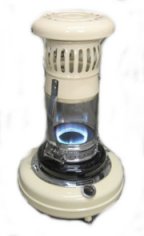
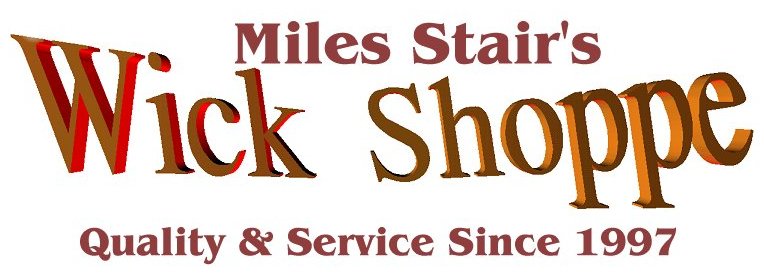 . . . .
World's Largest Selection of Wicks!
Wicks for virtually every heater, stove and lamp made since 1850
Restored Victorian Era Center Draft Lamps
Photos and Information
Site Index
-
Photo Album
- Photos of
Wicks
The act of getting a Victorian Era lamp back working the
way it was designed to is cathartic - an act of mercy for the lamp and
good for the soul. These lamps were works of art. They
survived for over a century because of their beauty, even though no
wicks were available for decades until I had them custom made a few
years ago.
Restoration can be as simple as cleaning and
polishing or as troublesome as removing dents, replacing broken chimney
fingers and patching holes in founts - or having the original nickel
plating replaced. And now, shades can be made to match the base of
many Victorian Era lamps.
|
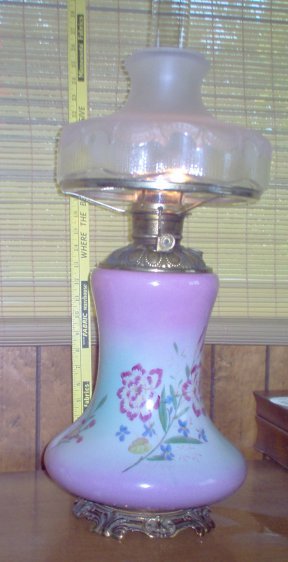 |
My newest restoration, and the best by far.
At left is a huge P&A Royal GWTW lamp I
purchased years ago on eBay. From the base to the top of
the chimney it is 29" tall. The original globe shade
had been broken decades ago, so I put on a fairly pretty shade
but it obviously did not match the lamp base.
At right is the lamp as restored by David
Ward of
The Village Lamp Shop.
The brass is polished, the crown ring and base were brass
plated and polished. The beautiful ball
shade painted
by Marsha at the Village Lamp Shop to match the base! Contact information is below. |
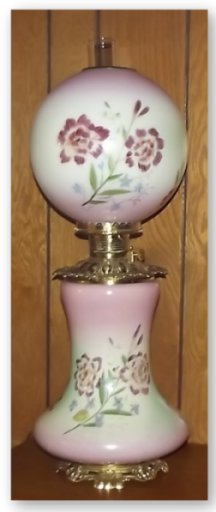 |
Update August 7, 2013. David Ward no longer does replating
or most lamp repairs.
Marsha Ward still offers Fabric Shade recovering & relining as
well as
shade painting. Contact Marsha directly for more information.
shades@thevillagelampshop.com
Many "Gone With The Wind" (GWTW)
lamps had their shades broken in the past 120 years. Without
a matching shade these lamps simply lose their luster, their
nostalgia - and a considerable amount of their value. Marsha
of the Village Lamp Shop has been painting shades to match the
base since 1989, and her shades restore GWTW lamps to their original beauty.
Please note that no one ever accused me of being a good
photographer. The setting, background, light from the flash,
etc, will alter the apparent colors. In the photo above
right, for example, the ball shade reflected more light and
therefore appears to show more white in the middle of the shade
than is really present - the shade does exactly match the colors
and tone of the base in real life. The color in the base
above left was taken with a different camera in a darker room.
Let us look at other lamp restorations,
beginning with the smallest size.
The "Tiny,"
"Little" or "Junior" lamps were usually used
in wall brackets, but a few were sold as hanging lamps and the
hangers or harps themselves are virtually impossible to find.
Dave Ward of
The Village Lamp Shop
made the harps shown below for me based on illustrations from period catalogs.
|
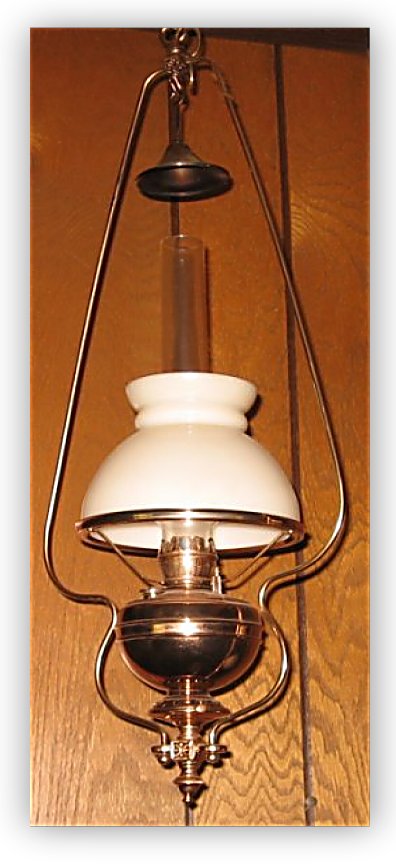 |
The lamp on the left is a
Little Jewel, made by Ansonia in the 1890's. Dave
Ward made the very detailed and beautiful hanger, then plated
everything in rose gold.
The lamp on the right
is an embossed Tiny Miller, also from the 1890's. The
shape and style of the harp and shade were miniaturized from
the style used for the
Miller Dresden hanging lamp. Dave made everything
you see except the lamp and chimney, which means he even cut
the shade to the right shape. Then he plated the metal
in brass. Both of these hanging lamps are incredible
jewels! |
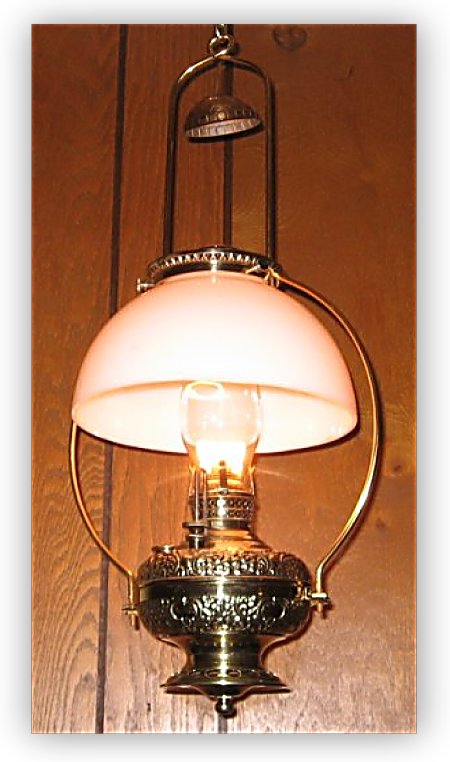 |
|
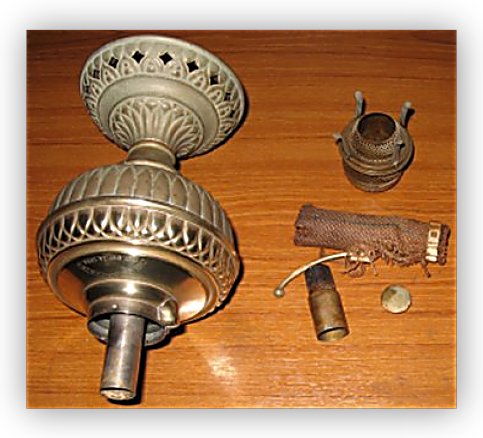 |
The Jr. Rochester Table Lamp, size 0.
Patent Sept. 14, 1886.
This is perhaps the smallest table lamp manufactured.
These lamps were used in the summer for lighting when the heat
generated by a larger lamp was not desired.
At left, the lamp as I received
it. A layer of corrosion and dirt, but overall it was in
fine shape. At right is a photo of the lamp after
boiling, disassembly, cleaning and polishing. This one
was easy to restore to working condition. |
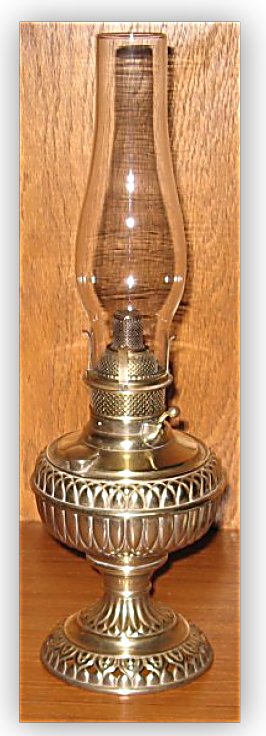 |
|
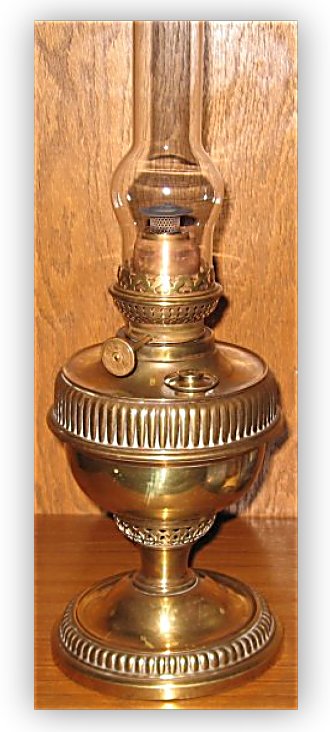 |
Tiny B&H Table Lamp, size 0. >>>
Circa
1894, dated by wick raiser system.
<<<<<<<<<<-------
14''' Central Vulcan
14''' Central Vulcan. Made by Wild & Wessel for
Catterson in London.
Pre-1900. It is almost twice the size and triple the weight of the
Little B&H at right, but both used the size 0 wick and
produced the same light output. See Globe Vulcan
Wick Knob
indicia and
Catterson plate on the burner, and outer draft tube
indicating this is a
14''' Central Vulcan. These lamps used a
wick which was
circular
but had two long tails and was fed through the top of the
burner. Note that while the wick winder says "Globe Vulcan" it
is unlike other Globe Vulcan's as it has an Agri-Brenner flame
spreader and gallery mated to a 14''' Central Vulkan draft
tube and wick raiser assembly and uses a Central Vulcan wick.
Both the Central-Vulkan and Agni-Brenner are shown
side-by-side in the 1906 Goldberg catalog, listed under Hugo
Schneider Aktiengellschaft, Leipzig, as H.S. purchased Wild &
Wessel in 1903, and may have been assembled by H.S. and sold
to Catterson in this form. It should have a 14''' Vulcan
chimney.
These were easy ones to restore, needing
only
cleaning and polishing.
|
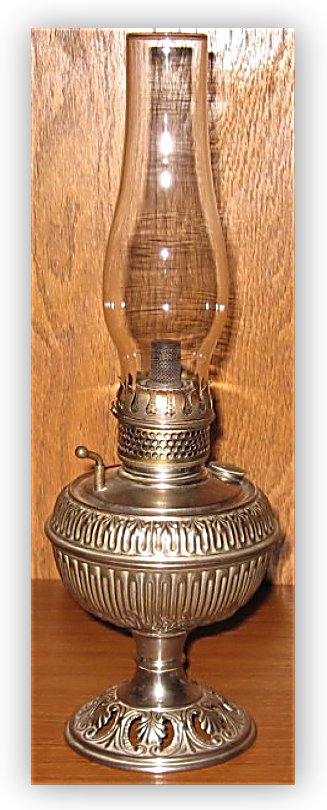 |
|
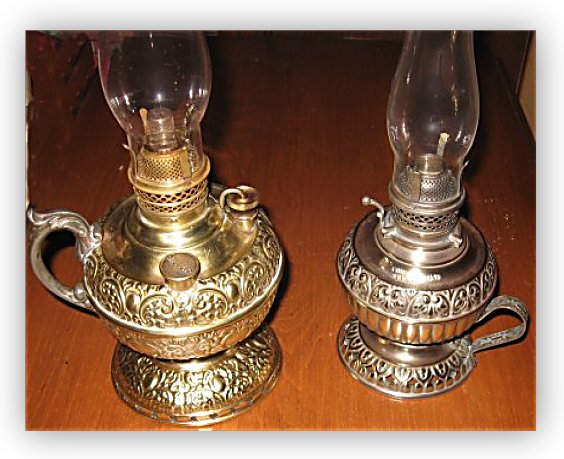 |
<<< Miller Jr. Hand Lamp on
left, Tiny Juno Hand Lamp on right.
>>>> L to R, Parker, Hinks, Veritas, Young's Court, B&H
Imperial. These lamps needed only cleaning
and polishing to bring out their beauty. |
 |
|
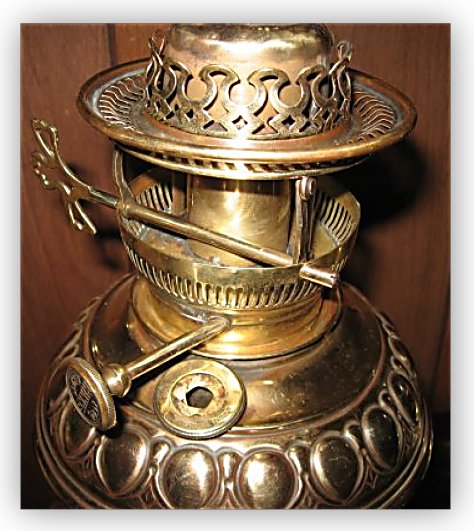 |
Some lamps are difficult to
polish, but the results are worth the effort. Shown left
and right is a Hinks 45 CP Annular.
This Hinks Annular 45cp has
that unique feature of Hinks lamps - the Morton's patent iris
fill cap, and a key lift gallery - the lamp can be lighted
without removing the chimney and shade. The complexity of all
the small parts means a lot of Q-Tips, Blue Magic Metal
Polish, liquid auto polish, and considerable patience can end
with beautiful polished brass lamp. |
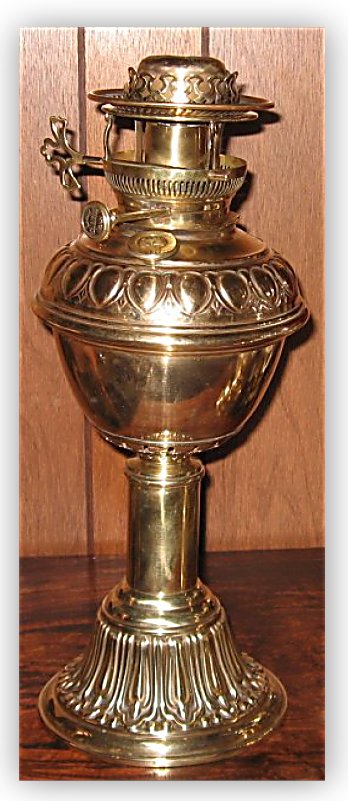 |
|
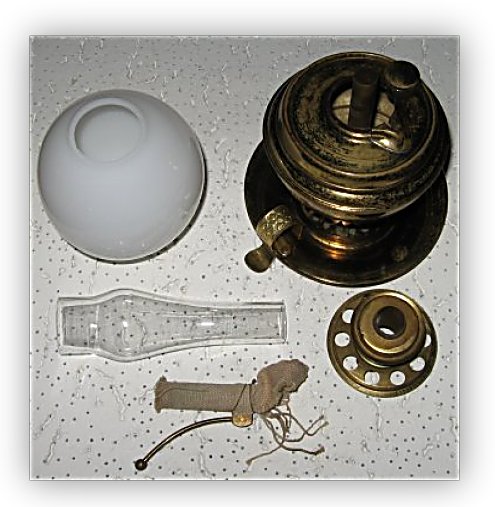 |
The Baby Rochester
is most likely the smallest center draft lamp ever made.
The wick would have to be labeled a "1/2 - 0" because it is
only 1/2" diameter. This version with the tiny ball
shade is the only one I have seen.
This lamp had a copper wash
finish which was peeled and fading - very ugly. I
polished off the copper wash,
boiled out the fount, and the
result is the beautiful lamp shown in the right side photo. |
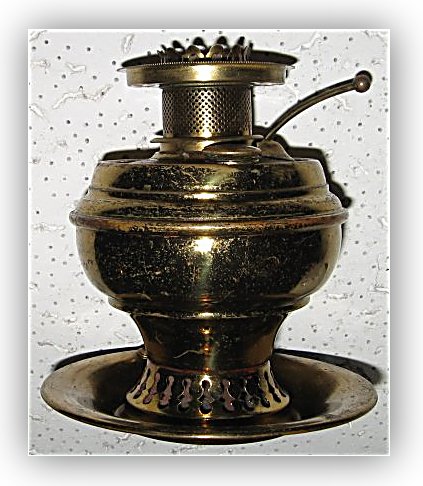 |
Replated lamps. The next
series of photos shows lamps which were originally nickel plated
but the nickel had tarnished or was simply worn through.
|
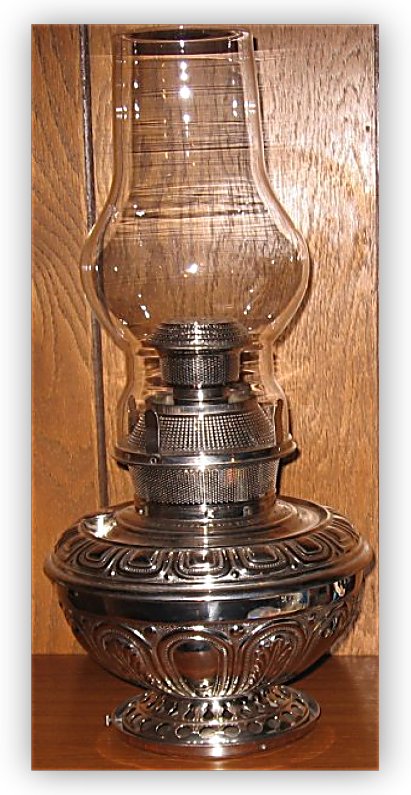 |
B&H No. 89
Restored and replated by
Dave Ward. It came out so
beautiful it is on the front page of
his web site.
Both of these lamps were restored and replated by
Dave Ward of
The
Village Lamp Shop. David no longer does replating work. |
B&H Radiant #4
This Radiant #4 is the early
version with the
post-type flame spreader, and about as close a copy of the
20''' Belgian as B&H could go without patent infringement.
Later versions had a thimble-type flame spreader.
|
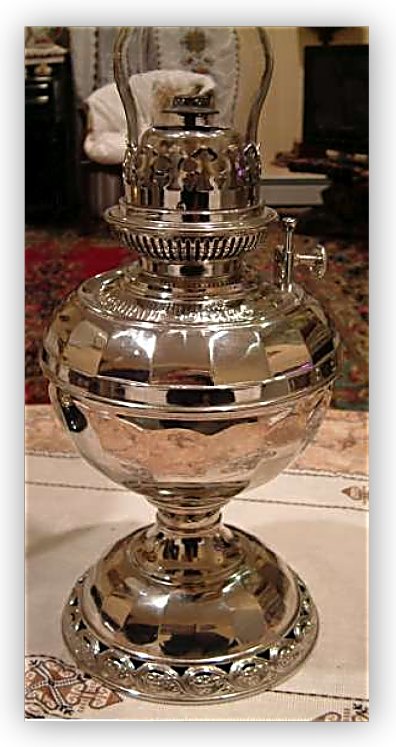 |
|
 |
Rayo Jr. on left.
Plating by Dave Ward.
Rochester store lamps
on right. Dave Ward replated the 2nd model Rochester
Store Lamp (1886) on the left side of the photo. On the
right is a 1st Model (1884) with original nickel that I
cleaned and polished. |
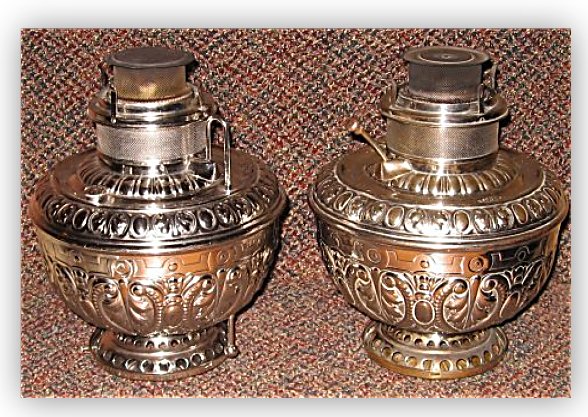 |
|
 |
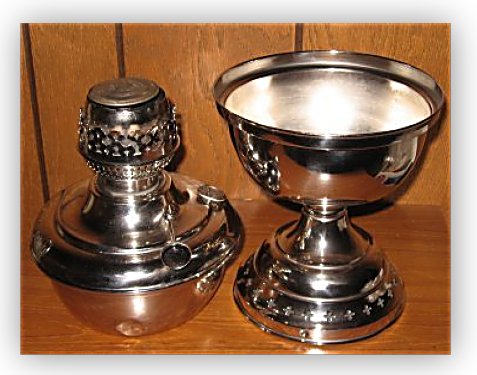
Hugo Schneider lamp above and at left.
Made in Leipzig, Germany, circi 1890's |
Hugo Schneider lamps were
made from steel, not brass,
and as a table lamp with an insert
fount! This is reported to be the last "Blitz" table lamp
left in the world. My Schneider was fabulously restored and
has a new nickel plating by David Ward of
The Village Lamp
Shop.
David no longer does replating work. |
|
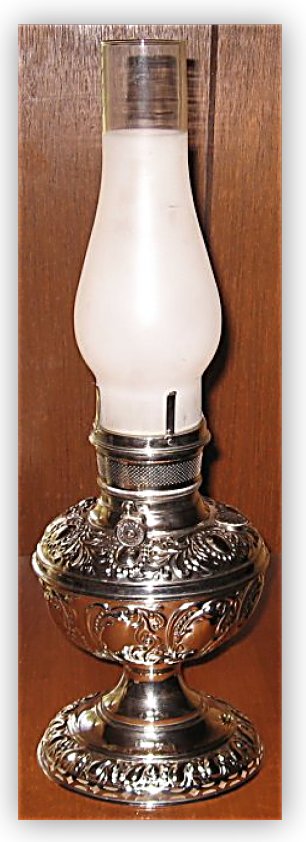 |
Left, P&A Royal #2 Table
Lamp.
This embossed P&A Royal is a
very nice lamp.
Right, L&B Belgian 20'''
Table Lamp.
A rare embossed Belgian in
perfect condition.
Restored and replated by
Dave Ward
of
The Village Lamp
Shop.
David no longer does replating work. |
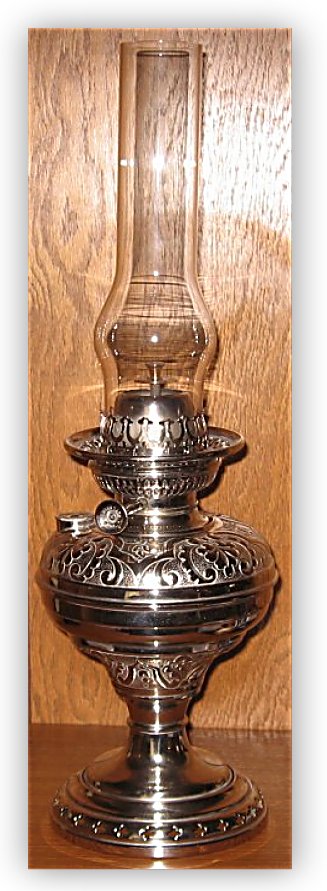 |
|
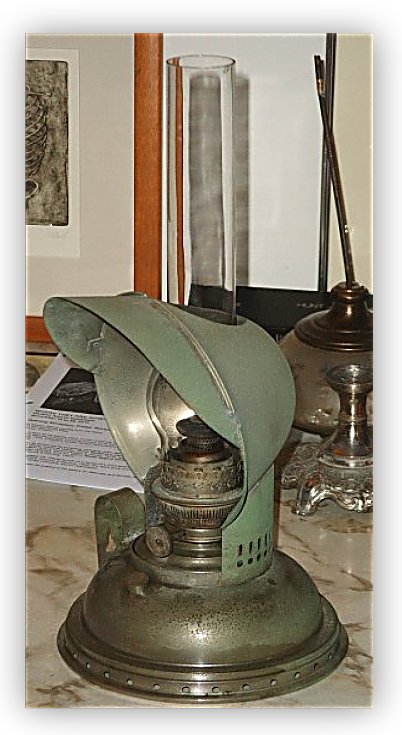 |
Veritas "The Reader" Hand Lamp.
Circa 1920's.
At left is the "before"
look. At right after cleaning and new nickel plating.
This fabulous lamp is owned by Peter Brickell of Toronto.
The plating was done in Canada.
|
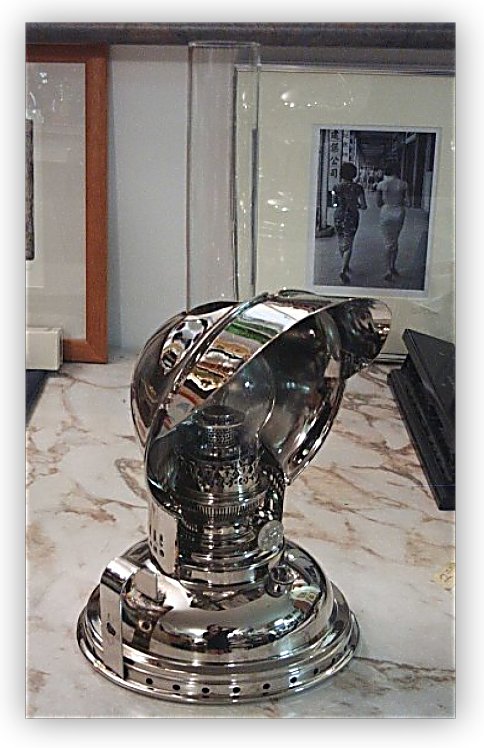 |
|
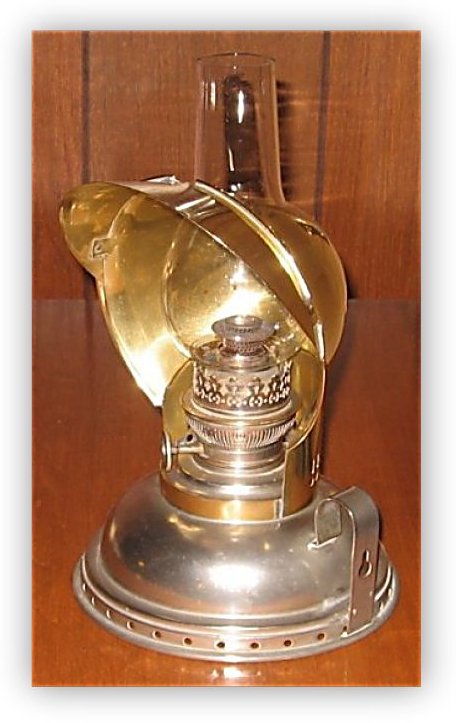 |
At left is my Veritas "The Reader." The font and gallery
were in good condition and looked nice after polishing.
But as found in Cornwall (on eBay) it was missing the
reflector and had an incorrect chimney. I located a
reflector in England, but it was brass. Still looks nice
but does not match the lamp. After Dave Ward did his
magic of replating it looks beautiful. The photo is dark
because a flash simply reflects too much light from the
beautiful replating. |
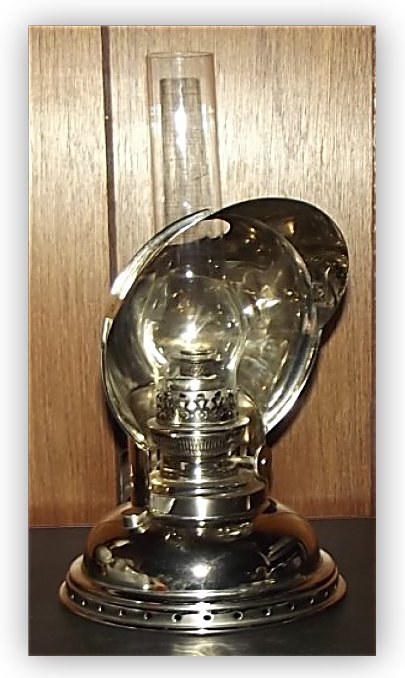 |
|
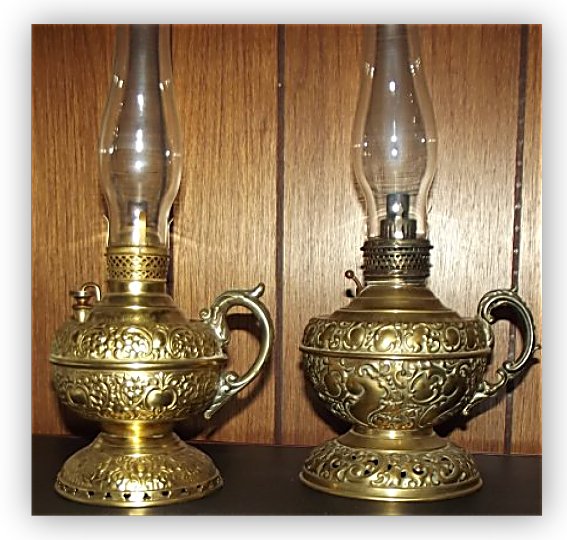 |
Far left, Miller Jr. Hand lamp. Right is
a New Rochester hand lamp. The New Rochester was an
obvious copy of the Miller. Miller had a copyright on
the design. The New Rochester was then only sold in very
limited quantity in England. I found this one with a
good font but thoroughly trashed burner, split, missing
chimney fingers, etc. Because of its rarity it was worth
restoring. David Ward did beautiful work and got it back
to useable condition again. |
|
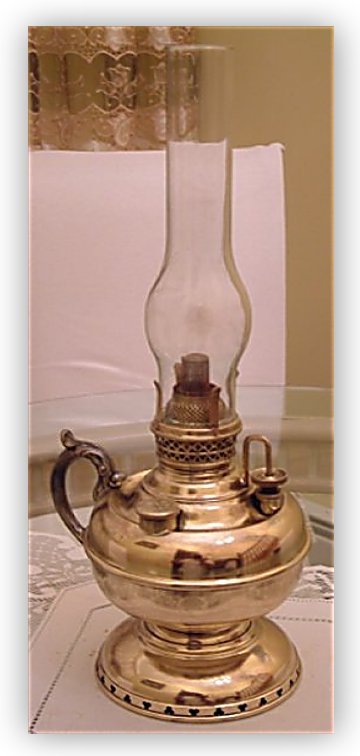 |
At left is a Miller Finger Lamp. It was sent to David Ward for his wonderful polishing
work.
At right is a simple, plain Rochester #2
table lamp. It is one of my best burning lamps, but it
was supremely ugly. The original nickel plating was so
thin it appeared the lamp was simply walked past the plating
shop in a hurry. No dings, dents or flaws, just ugly.
The photo at right shows the lamp after
nickel plating by David Ward. It looks better than it
did when new! I don't have to hide it now.
David no longer does replating work. |
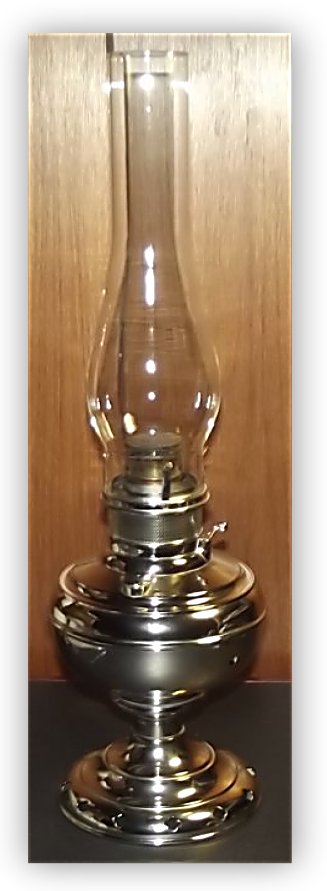 |
|
At right, a "French Garden Lamp" made by Wild
& Wessel. The burner is an 8'''. This lamp was
designed to permit burning outdoors in a draft (Punkah top) and light up a
fancy French garden. The short chimney inhibits really
clean burning, but that is not a problem outdoors when burning
as intended.
This particular lamp was purchased on eBay.fr
and arrived straight from a French garden, spider webs and
dirt intact.
Lamp restored;
parts
as received,
parts
after citric acid bath,
parts
after polishing.
Click the photo to enlarge the lamp. |
 |
Lamp Repair and Restoration:
I have had my lamp restoration and replating done by The Village Lamp Shop.
I am not in any way affiliated with the Village Lamp Shop. I have
my work done there because they have achieved that most rare status -
they have gone beyond master craftsmanship into the realm of magnificent
artistry. Unfortunately, David Ward no longer does replating work
and his shop is closed.
There are some shops which still do replating. One is Art Metal
Refinishers. http://artmetalfinishers.com/
Miles Stair
Back to top of page
|
Wicks for kerosene space heaters,
click here.
Home Page
Site Index
Lamps
Kerosene Heater Wicks:
Back to top of page
|